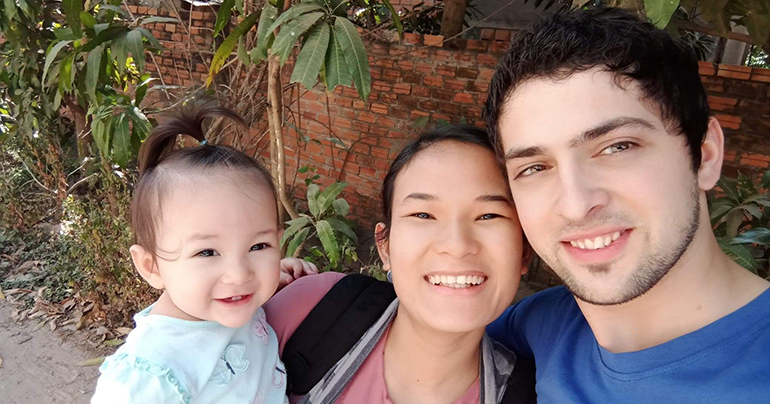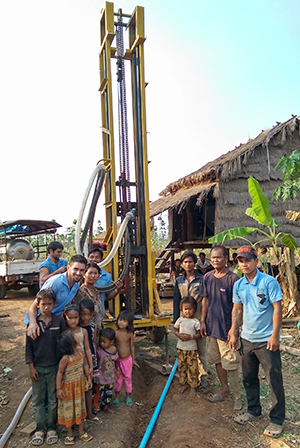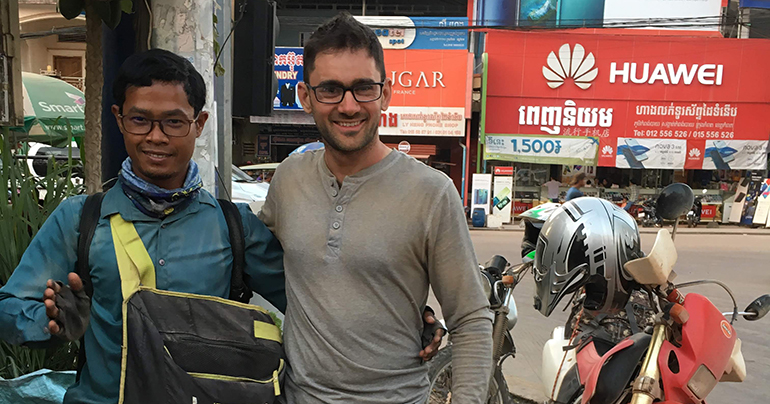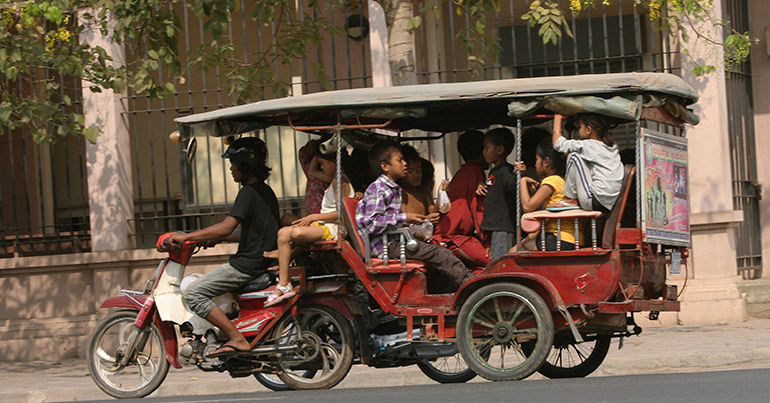What started as a beautiful dream involving a pair of tuk tuks and the two American brothers who owned them – who happen to be members of the Amish Mennonite faith – has transformed into a mission to bring clean water to rural communities across Cambodia.
Sadly, what originally brought John and Ken Gingerich to the attention of Cambodians is no more. They first arrived in Siem Reap in 2010 as missionaries for their Sugar Creek Church back in the American Midwest to found a local chapter of the South East Asia Prayer Centre. Ken was 20 and John was just 16 at the time. After their church ran out of money for their mission in 2013, they sold their tuk tuks and returned to the US to work – and now that they’re back, they credit those tuk tuks with helping them in their mission to gain converts to their faith and help their humanitarian efforts.
“Because we didn’t have enough money to buy a car, we bought the tuk tuks,” said Ken. They found decent used ones that needed only minor repairs for $1,200 apiece, as the Post reported. “It was a great way to start out because it puts you on the same level as the majority of the Cambodian people. They look at us wondering why we drive that and not a big Land Rover. It makes a great opportunity to open up a conversation and you’re able to make friends easier.” It also helped that they had quickly become fluent in Khmer, though they admit they are still learning.

The Gingeriches used their tuk tuks to transport people and things to and from the Centre, but didn’t take fares. When Post reporter Michael Sloan spotted them driving near Siem Reap’s Old Market, he flagged down one of them and asked for an interview.
When we spoke to them eight years later, the brothers had returned to Siem Reap for just a short time before heading back to Ohio to earn more money working blue-collar jobs to help them continue their water well drilling project. Ken started a family during their first stint in Cambodia, marrying a Khmer woman with whom he had a baby, with another on the way. The paperwork to bring the family back and forth is daunting, he said, but the brothers are driven to pursue their dream.
John and Ken became involved in their massive undertaking to bring clean water to remote communities around Cambodia two years after arriving to do missionary work. The existing water well drilling technology available in 2012 when they first got involved was fine for the sandy soil around Siem Reap province, they said – it was basically a hand drill that could be twisted 100 feet into the earth. But when they hit rockier soil, they needed something better.

So they rented a machine and then started building a prototype based on that device that could better handle rocky soil. They’re currently working with an NGO and seeking funding to expand their efforts.
“It’s quite exhilarating work when you drill a well in a place where they don’t have any water or they have a small pond of dirty water and then you produce a well, get the water up to the top and it’s amazing, the joy that these people have with clean water now,” said Ken.
The brothers’ vision for the South East Asia Prayer Centre was to gain converts while teaching valuable life skills. During their time in Cambodia, they say they’ve helped convert eight to nine families, or around 27 people total, to the Amish Mennonite religion. Ken estimates there to be around 40 American Amish Mennonites in Cambodia, and around 100 total including Cambodian converts. Amish Mennonites are a reformed offshoot of the Old Order Amish in America, whose religion forbids them to use modern technology – they are popularly known for driving horse-and-buggies.
John describes his faith as “living out the Bible as best as we know it.” So how does that translate in a Buddhist culture, and how does one avoid offending locals while trying to convert them?
“What we ran into especially in villages is that some people would say that if you became Christian, it means you don’t respect your elders or the culture anymore or the Buddhist religion,” said Ken. “It’s all based on building a relationship with them, gaining their trust. We don’t disrespect another religion or them or their upbringing or their culture… I’ve seen other [missionaries] try to move very quickly and make a lot of converts in a very short time – it doesn’t work.”
They tend to focus their efforts on the poorest Cambodians.
“There are a lot of Cambodians we have gotten to know who were very poor so they were relying on the Buddhist religion to help pull them through their dire situations,” said Ken. “Some of them were involved with some witchcraft because they weren’t very healthy and were trying to get better. For example, one of the guys that did well drilling with us, his mother was very sick often and about once a month she’d have this weird spell come upon her where she had serious pain and she barely would be able to breathe.”

The brothers claim that their spiritual work has brought their converts a new freedom and even a measure of prosperity. It was only fair to ask if they had incorporated anything from Buddhism or Cambodian culture into their own lives.
“The idea of taking time to be consistent and meditate more upon things,” said Ken.
“They have this ideology of not rushing so much,” said John. “Our culture where we come from is very driven, it’s one of those things that can be a good thing and can be a bad thing. We can learn from some of their culture. It’s been interesting.”
They hope to have their prototype completed and get back to drilling in the countryside in a month or two. But for now, their tuk tuk dream is a “been there/done that” – though one gets the feeling that they miss those early wild days learning to ride them and hanging around other tuk tuk drivers.
The brothers chose the school of learning by doing.
“[We] basically jumped on and went,” said Ken. “Start out with an empty one for sure before you put any weight in it, because it just gets harder from there. Tuk tuk culture can be very challenging. It’s somewhat dangerous while you’re transporting people or items. You’re out there on a little motorcycle pulling a big trailer, and you have to be strong up here in your arms, doesn’t matter how long your legs are.”


